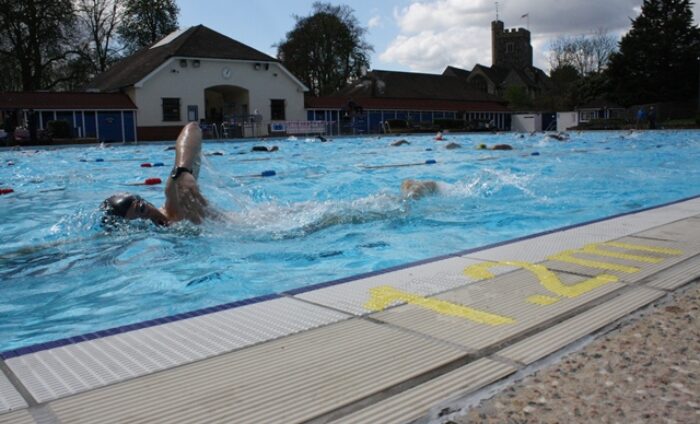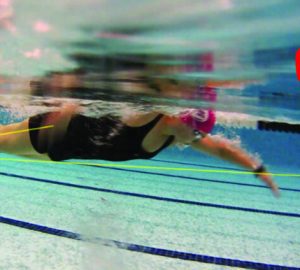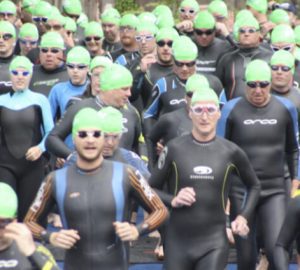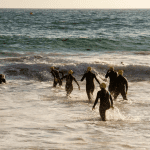
Things to think about in winter to swim faster in open water in summer
While some people might argue that outdoor swimming is now a year-round pursuit, in many parts of the world there is still a distinct season in which we engage in middle to long distance racing or open water swimming challenges. In the winter, swimming outdoors, particularly if we want to do any meaningful long distance training, becomes increasingly difficult so many of return to the pool.
Rather than cursing the cold water and being confined by walls, see this as an opportunity to reflect on and re-calibrate your swimming to get you off to a flying start when the season turns again.
After a summer spent swimming in open water I’ve noticed many swimmers develop flaws and kinks in their technique that can easily be fixed over the winter.
Head position
It’s very common to see people returning from the open water with too high a head position due to frequent sighting. When you return to the pool, check that your head is in a neutral position and your neck is relaxed. I keep in mind a ‘facing down but looking forwards’ approach as a nice balance or compromise between best hydrodynamics and seeing where you’re going.
Leg kick
If you’ve been wearing a wetsuit all summer, you may have developed ‘lazy legs’. In long distance swimming, we do not really look to the legs for propulsion but for balance and traction. The better your kick the better the whole body contributes to an efficient swimming motion.
Stroke rate
You may have upped your stroke rate for open water swimming and racing, which is usually a good thing. However, a high stroke rate makes it hard to focus on accurate technique. Slow down your stroke rate to concentrate on technique. You can always speed it up when ready.
Breathing
Could this be the season when you finally crack bilateral breathing? It’s useful for training and improved symmetry, so worth practising during the winter. It’s not always necessary on race day but useful to have options.
Losing the pull buoy
Your pull buoy should be a useful part of your fitness training not a prop to hide poor technique. Work on body position so that your legs don’t sink. Prepare now to be able to swim without a pull buoy or the support of a wetsuit in case you find your planned event bans wetsuits due to high water temperatures.
Temperature
If you struggle with cooler outside water temperatures then you can help prepare your body and mind through the winter by taking cold showers and sometimes wearing fewer clothes than necessary. You could also try swimming in a heated lido, which gives you brief exposure to the cold but still allows you to swim a decent session. We have sessions at Hampton Lido and London Fields for these reasons.
Injuries
If you have any niggles or untreated injuries, now is the perfect time to get them checked. Also look at adding some land training to improve your range of motion and flexibility, which will reduce your risk of injury and help you swim with better technique.
At Swim for Tri, the reason we think working on your swim technique in the winter is so important is so you don’t have to worry about it during an event when you would be better off focusing on pacing and tactics, such as drafting. When I race I imagine I have something like a car dashboard in my head that’s keeping track of essential information such as my temperature, energy levels and stroke rate. I don’t want to be thinking too much about technique as well. That’s not to say you can or should ignore it, and you might want to have a check list of things to run through every couple of minutes (e.g. hand entry, early catch, high elbow etc.) but you definitely don’t want holding your technique to be your main concern.
Dan Bullock is founder and head coach at Swim for Tri, a coaching company working with open water swimmers and triathletes. He’s also open water national champion for his age group.
Find out more at: http://www.swimfortri.co.uk/technique/








